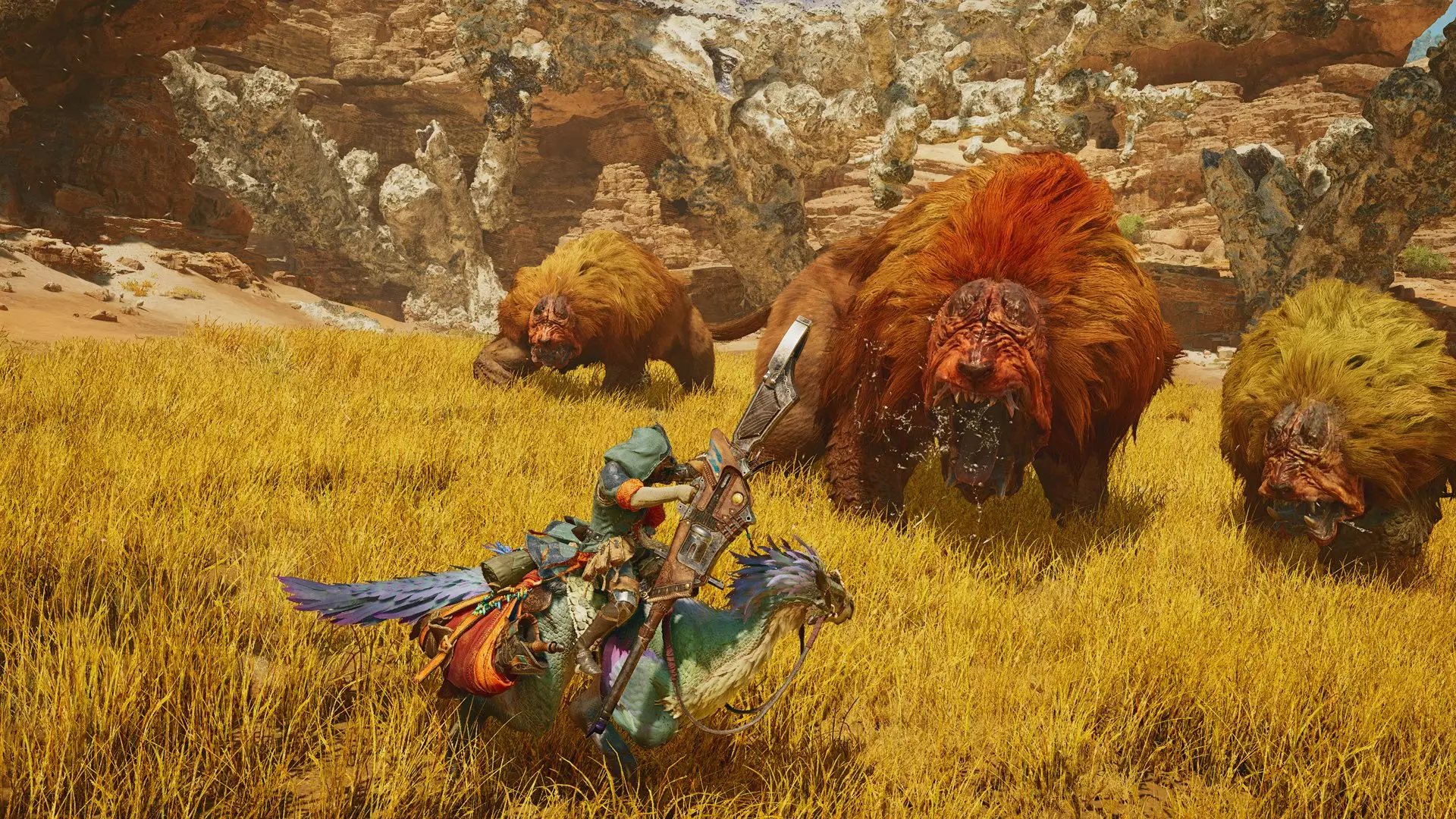The Monster Hunter series, known for its grandiose battles against formidable creatures, is poised to enter a new realm with its latest installment, **Monster Hunter Wilds**. Rather than simply replicating the winning formula that propelled **Monster Hunter World** to unprecedented popularity, Capcom’s development team has set sights on infusing innovation and adaptability into the gameplay experience. This ambitious approach seeks to redefine player interaction within a world that evolves over time, mimicking the complexities of real ecosystems.
One of the standout features of Monster Hunter Wilds is its dynamic environments. The game introduces a variety of climate types that shift according to seasonal dynamics, characterized as Fallow, Inclemency, and Plenty. These alterations not only influence the aesthetic qualities of the landscapes but also the strategic approaches hunters must take when tracking and hunting monsters. For example, a hunter might face vastly different challenges in a dry Fallow environment compared to the richness of a Plenty season. Ryozo Tsujimoto, the producer behind the franchise, emphasizes that this focus on an ever-changing natural world aims to create a more engaging gameplay experience, where players must continuously adapt their tactics based on real-time climatic shifts.
With environmental variables at play, the team is determined to push the boundaries of what players can expect in their hunting expeditions. The notion of climate impacting not just the flora but also the fauna presents an intricate challenge: players will encounter different species and must tailor their approaches to reflect the ecological realities dictated by the weather. Tsujimoto notes that this shift towards a more organic gameplay structure was made possible due to advancements in technology, allowing the team to create an immersive setting that feels alive and responsive.
The game’s development did not come without its hurdles. The onset of the COVID-19 pandemic posed significant challenges to the research efforts typically foundational in crafting the Monster Hunter universe. Traditionally, development teams would travel to diverse ecosystems to gather insights firsthand. However, with travel restrictions in place, the team had to rely on theoretical frameworks to envision their designs.
Despite these obstacles, Tsujimoto explained that they maintained a strong focus on assessing different environmental behaviors. Through extensive research, the team delved into various ecosystems and theorized how specific weather patterns would affect interactions between monsters, flora, and hunters alike. This foresight developed a foundation for understanding how life might adapt to change – an essential theme in both the real world and in Monster Hunter Wilds.
Realism plays a crucial role in the imaginative creations that populate the Monster Hunter universe. The design team doesn’t merely dream up fantastical monsters; they endeavor to ground their designs in biological truths derived from actual animals. Tsujimoto shares insights about their meticulous study of real-world animal behavior and adaptations, asking meaningful questions about how these creatures thrive within their environments.
Each monster is not just a creation adorned with fictional attributes; it exists within a larger ecological context. The development team investigates factors like predation, feeding habits, and environmental adaptations to create beings that feel authentic. Through this detailed examination, the aim is to ensure that hunters in the game dissect not just these monsters’ physical traits, but also their behavioral patterns, enriching the overall hunting experience.
Tsujimoto articulates that the excitement surrounding Monster Hunter Wilds lies not only in its innovations but also in the fresh challenges it presents to players. With the team’s commitment to continually evolving gameplay, players can expect to confront not just the monsters themselves, but the complexities of an active world that rewards observation, adaptation, and strategic planning.
As the release date nears, anticipation grows around how these new elements will resonate with a community that has been drawn into the thrill of monster hunting over many years. In moving forward, Capcom is not just crafting a game; it is instilling a philosophy of environmental interaction and adaptability within its player base—a timely approach as the realities of climate change and ecological awareness permeate gaming experiences. The hunter’s journey in Monster Hunter Wilds is set to be more than just a quest for glory; it’s a reflection of life’s unpredictable and ever-shifting nature, ready to be explored by players worldwide.


Leave a Reply